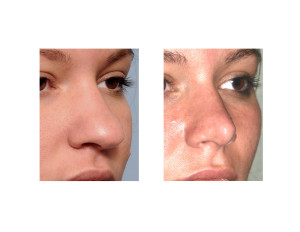Background: The wide variety of nose shapes that exist around the world have been attempted to be classified by multiple approaches. One type of nasal shape classification, known as leptorrhine, mesorrhine and platyrrhine, are based on the nasal indices. The nasal index is the ratio of the widest part of the nose to its length multiplied by 100. If the nasal index falls under 70, the nose is said to be leptorrhine. (narrow-nosed) If it is over 85 the nose is said to be platyrrhine. (broad-nosed) In between lies the mesorrhine nose shape. There are known relationships between geography, climate, body weight and nose shape as expressed by the nasal index.
Facial shapes and the noses that lie within are influenced by geography. Europeans, for example, have long and more narrow faces with a wide variety of nose shapes. Nasal shapes among Europeans is most commonly mesorrhine but this changes by region such as the Mediterranean and Western Europe being more leptorrhine while Eastern Europeans and the Balkan region more commonly having platyrrhine nasal form.
Ethnic rhinoplasty is usually defined as that of non-Caucasians. (mesorrhine or platyrrhine nose shapes) Often these noses are accompanied by thick or thicker overlying skin usually of a more sebaceous quality. The nose may often be long and droopy with a dorsal convexity. Getting good nose refinement in the tip area can be challenging with the droopy tip having a thick and fatty skin quality to it.
Case Study: This 20 year old female of Czech family origin had always wanted a rhinoplasty to reshape her nose and make it more thin and shapely. She had a wide and droopy nasal tip with thick skin. Her profile showed no hump or dorsal convexity but an overprojecting and under rotated nasal tip with long lower alar cartilages and very thick skin.


Highlights:
1) Ethnic rhinoplasty in the Eastern European nose often deals with broad and drooping nasal tips with thick skin.
2) Getting good nasal tip definition by narrowing and derotation are key rhinoplasty manuevers in the Eastern European nose.
3) If secondary rhinoplasty is needed in the Slavic Rhinoplasty six to twelve months should pass before doing so.
Dr. Barry Eppley
Indianapolis, Indiana



